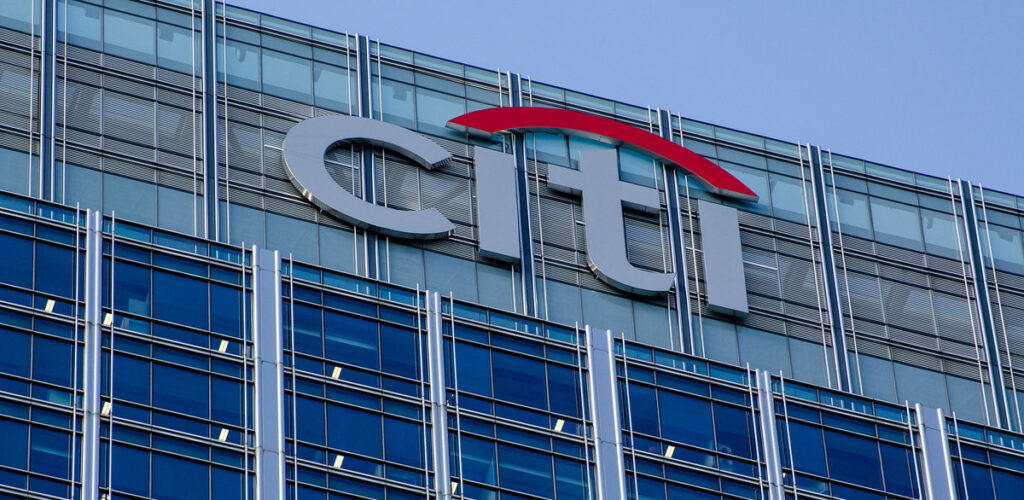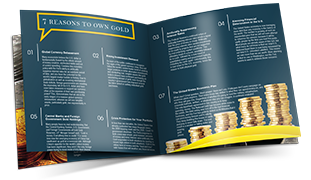 Citigroup is striking a bullish tone again, reinstating its $3,500 gold price benchmark–a sharp forecast reversal from a few months ago. This upward revision follows hobbled economic output, labor market deterioration, and other souring macroeconomic indicators.
Citigroup is striking a bullish tone again, reinstating its $3,500 gold price benchmark–a sharp forecast reversal from a few months ago. This upward revision follows hobbled economic output, labor market deterioration, and other souring macroeconomic indicators.
Despite minor pullbacks over the past few months, gold prices hold near record highs, demand remains robust across sources, and retail investors are joining the rally. According to analysts, this breakout looks more sustainable than prior gold rallies.
$3,500 Call is Back Following Downard Revision
Citi initially released a $3,500/oz gold price target in May on the back of escalating trade tensions and robust gold demand.
However, analysts downgraded their outlook in June, predicting gold would fall below $3,000/oz over the next six to 12 months. Citi’s bearish revision came after months of flat price action and seemingly strong economic data. However, those signals proved misleading.
Recently, a combination of alarmingly weak July hiring (including major downward revisions), renewed tariff threats, and a weakened dollar has now forced analysts to return to their earlier target.
Citi now expects gold to hit $3,500/oz in the next three months within a trading range of $3,300 to $3,600.
Why Citi Returned to Bullish
Analysts point to a growing mix of macroeconomic pressures, geopolitical risks, and shifting market sentiment as key drivers behind the bank’s latest forecast upgrade. Some of these factors have been driving the gold rally since early to mid-2024, while others are triggering more recent spikes.
Weakening Growth Outlook
US gross domestic product (GDP) recovered slightly in Q2 with 3% annualized growth, but economists suggest a dramatic drop in imports misleadingly boosted GDP. The Philadelphia Fed still expects slowed economic output, with GDP anticipated to slide to 1.4% for 2025.
Labor Market Slump
The July jobs report rattled markets as hiring plummeted to 73,000, falling more than 30% shy of expectations. At the same time, May and June’s reports were slashed by 258,000 jobs, marking the largest two-month slip since 1968 (minus pandemic-era revisions).
Recession & Stagflation Fears
Citi views Trump’s seemingly permanent tariff strategy as a precursor to recession and higher inflation. Recently, the group raised the odds of a recession to 45%. Furthermore, Nathan Sheets, Citi’s Chief Economist, warned: “Tariffs are a stagflationary shock to the US economy.”
👉 Related Read: Stagflation: What it is, What Causes It and How to Protect Against It
Rate Cut Expectations
Trump’s repeated attacks on Chair Jerome Powell are fueling a Fed credibility crisis as it threatens to further harm the US’s financial reputation. Although the central bank deferred on rate cuts at its latest meeting, markets are factoring in a 91% chance of September slashes.
Weaker US Dollar
The US dollar is falling right now after the weak jobs report kneecapped a short-lived recovery. The greenback has struggled to make up any of the 10% loss since the opening volley of Trump’s trade war. With a deteriorating world reserve currency, the world is turning to gold as a replacement.
Gold Demand Trends on the Rise
As the economic outlook grows dim, investors are increasingly turning to physical gold to protect their wealth against inflationary pressures. Citi estimates that total gold demand is up 33% since mid-2022, prompting a doubling of the gold price over the same period.
Analysts further highlight growing purchases across sources as demand remains elevated among central banks, institutional, and retail investors. More specifically, investment demand, particularly among everyday investors, spiked by more than 25 times in Q2 2025, when measured year-over-year.
Due to this diversified and sustained demand, Citi describes this gold rally as more stable than prior breakouts. The bullish combination of broad demand, including official reserve diversification and physical retail consumption, and persisting macro forces indicates further price movement.


